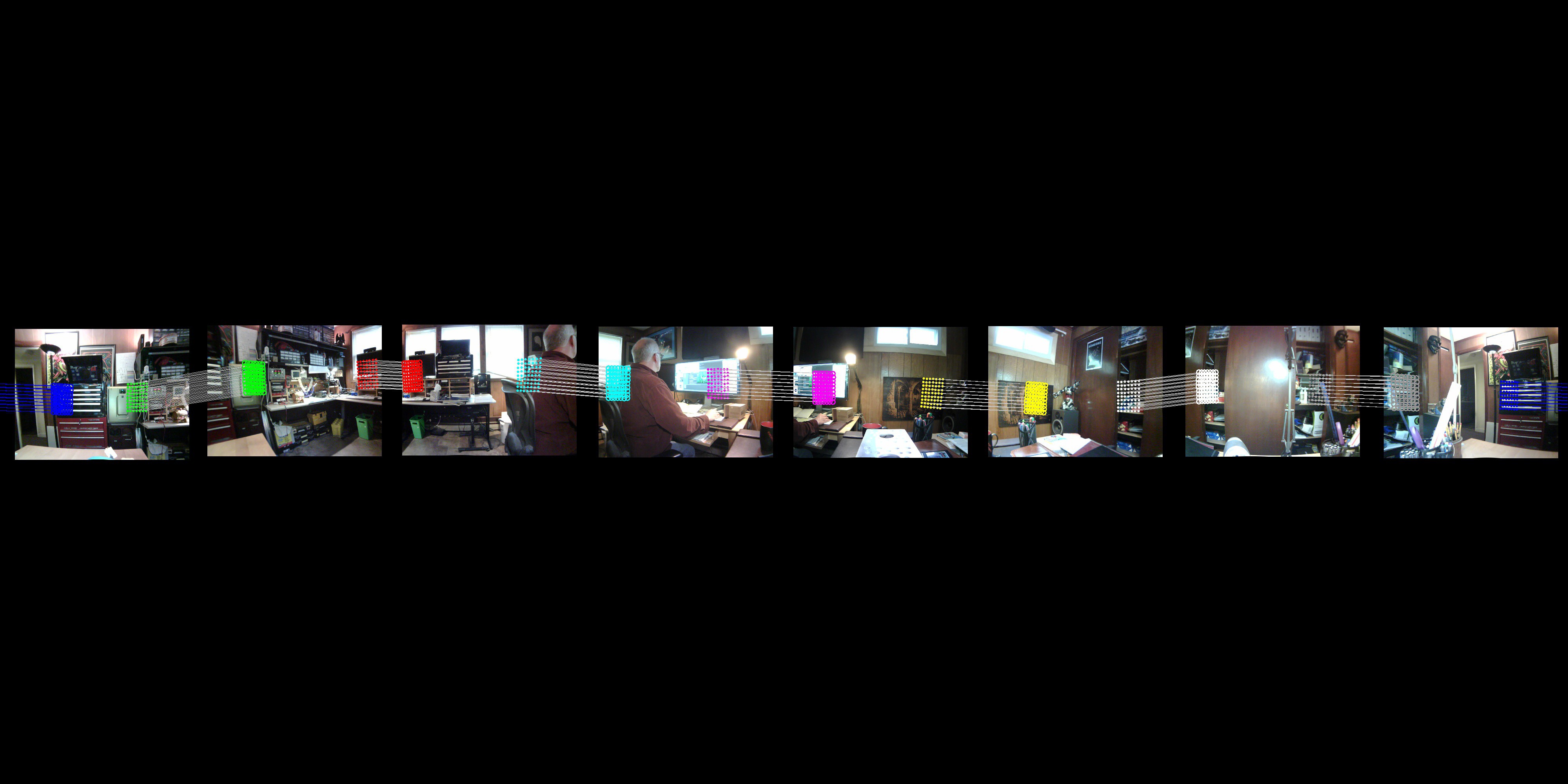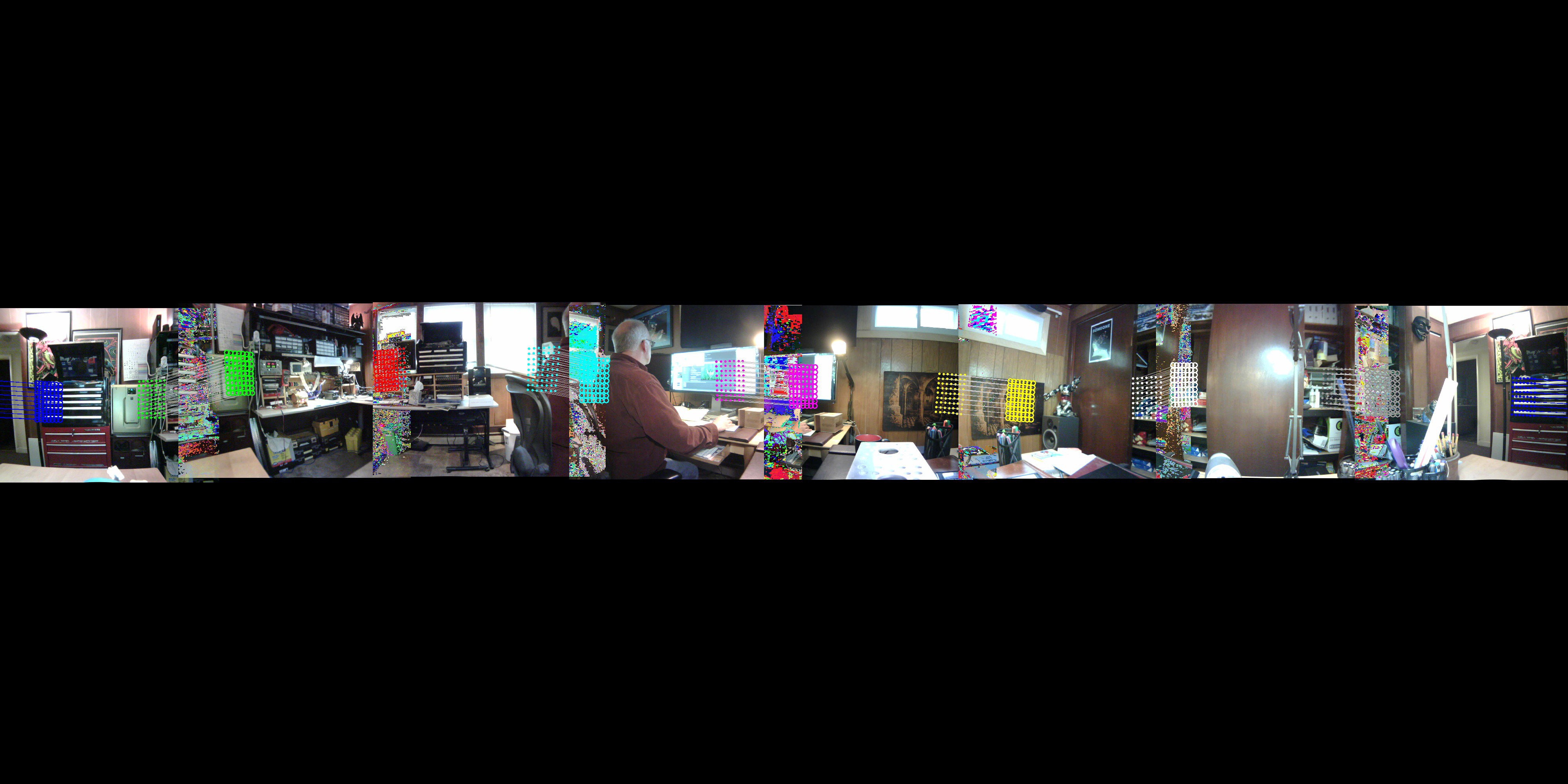
This is what the system knows when it's started cold and doesn't have any knowledge of the exact camera configuration. You can see the horizontal field of view is way to small in the baseline image, however you can also easily distinguish the individual camera images which are to be fused

In the second image you are seeing the optimal non-stocastic solution, i.e. the system has reduced the error as much as it can without bulldozing the error about in the process of making it smaller. In other words, this is as close as you can get with simple math and an insistence on easily reproducible results. After this it becomes a much nastier problem.
Interestingly enough, check the red grid - we've got a provable, easily repeatable major error reduction on this grid, while the others are to one degree or another problematic. It's one of the things I love about this class of problems - ' <bleep> your NP hard, cause I'm an albatroz - there's no optimal solution at all. You pays your money you takes your chances' :-)
Next I'll post some images from the stochastic solver, which is pretty good at driving the grids to near closure. It's only problem is that I have a sneaking suspicion it's crazier than I am.
For those with idle time on their hands, the attached JPEGS hopefully have kept their EXIF data which defines all the camera angles and FOV's, descriptions, etc - would appreciate any input from people with advice on how to explain to EXIF that, umm, there's a whole mess of cameras that made this image
 Mark Mullin
Mark Mullin
Discussions
Become a Hackaday.io Member
Create an account to leave a comment. Already have an account? Log In.
One thing I forgot to mention - the weird false coloring - that's where the magic starts to happen - it's the systems crude attempt to indicate it's got a parallax error
Are you sure? yes | no